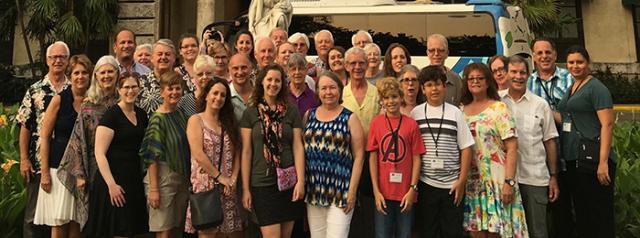How Travel Drives Membership, Loyalty and Funding
You’ve been handed the directorship of your organization’s travel program or maybe you’ve been at it for years now. Your friends think you have the best job of all time, but you know better. The pressure and responsibility to have a successful travel program weighs on you. And you have little time to devote to it. Will I get enough signups? Is it worth all the effort?
Travel planners we interviewed for this article unanimously agreed that it was – if done right. They say their members came back with life-long memories, bonded with their fellow members, and increased their involvement with the organization, often leading to significant donations. Planners agreed that with a well-designed program, the “ROI” and member building was very high.
What makes the difference on the tour?
Travel organizers say their members don’t want the typical tour. They signup because the program is exclusive to their members, often led by an expert from the organization and having special talks from specialists in the field. “When I look for destinations I look for places that have a direct connect to our exhibits or programs” says Karen Burns from the Virginia Aquarium & Marine Science Center. “Our members want to be immersed in an experience. Rather than running around from place to place, they want in-depth encounters and to get to know the people and local culture. I never go with a canned trip that is not customizable.”
How does travel build loyalty?
Most organizations include a staff member on the trip, providing the continuity and the tone for a warmer relationship that can lead to increased funding and positive word of mouth. But what really builds loyalty are the “special differences” in the destination that make it special and unique to that group. "As the point person for our trip, I spent time talking with [our tour provider] about what we were looking for and how we saw our trip coming together. I think that setting this groundwork helped to create the trip exactly as we pictured, if not better. [They] listened to our destinations of interest, overall goals, and created an itinerary that tied it all together," said Keri Leymaster, a former horticulturist at Discovery Cove, Aquatica, and Sea World. “At each of our destinations we were able to meet with a professional who really explained the significance of the collections and the environment so that we would glean the most information from each place," said Leymaster.
A recent survey of travel planners conducted in 2016 by Holbrook Travel underscores the notion of having an exclusive program. Travel planners attributed the most important factor in growing the travel program to “More unique, exclusive features,” rated “very important” by 83% of responders. The second most important factor was “New travel destinations.” which had 58% respond as being “very important.”
How can your tours become fundraisers?
Many nonprofit organizations choose to work a donation into the overall tour cost. While the average per person donation is $200 to $400, there's no limit to how high a donation can be. The amount depends on the audience: Will the tour be open to your full membership or invitation-only for high-end donors? Raising funds is a big bonus to your organization, and the community building is priceless. Plus, as travel participants can be more affluent, their likelihood to donate or up their gifts is increased.
How does travel affect donations?
“We don’t look at our travel programs as fundraisers, at least not directly,” says Karen Straus of San Diego Audubon. “They are first and foremost a way for our members to follow their passion and travel with a community of like-minded people. As it often turns out, members develop a much stronger bond with our chapter and many have gone to recruit new members and make donations. Is there a direct correlation? I can’t say “yes” but travel certainly has built loyalty. Then there’s the word of mouth with their friends. We’ve had new members join us through hearing about their friend’s trip and decided they wanted to be part of Audubon and our activities.”
"I now realize what an important role a trip can play in bringing our mission to the center of the experience,” said Kathy Hong, retired director of philanthropy at National Tropical Botanic Gardens (NTBG). “When planning this first trip to Costa Rica, it became apparent that visiting places where biodiversity is of such critical importance would allow us to have conversations within our trip and how our role fits together with what is taking place in countries such as Costa Rica. It supports our mission and hopefully will allow more connections with our donors.”
# # #



